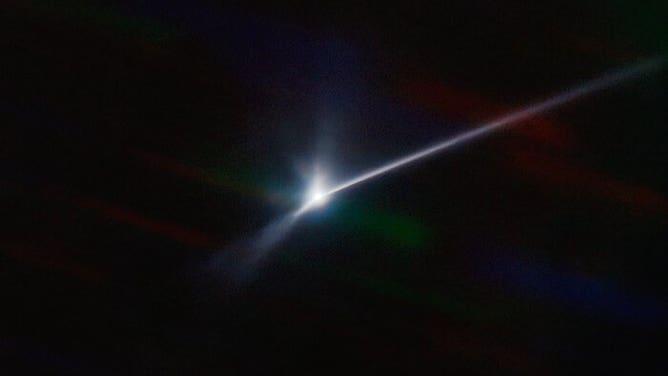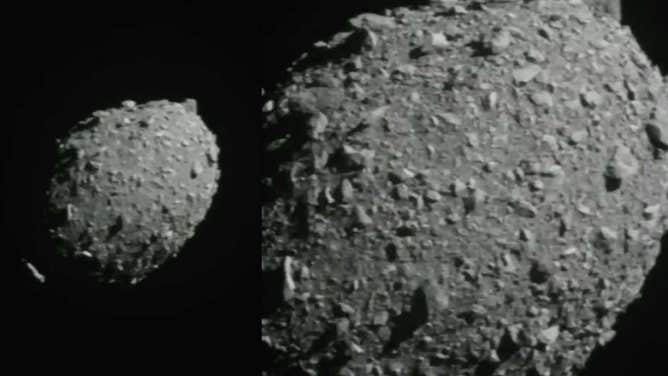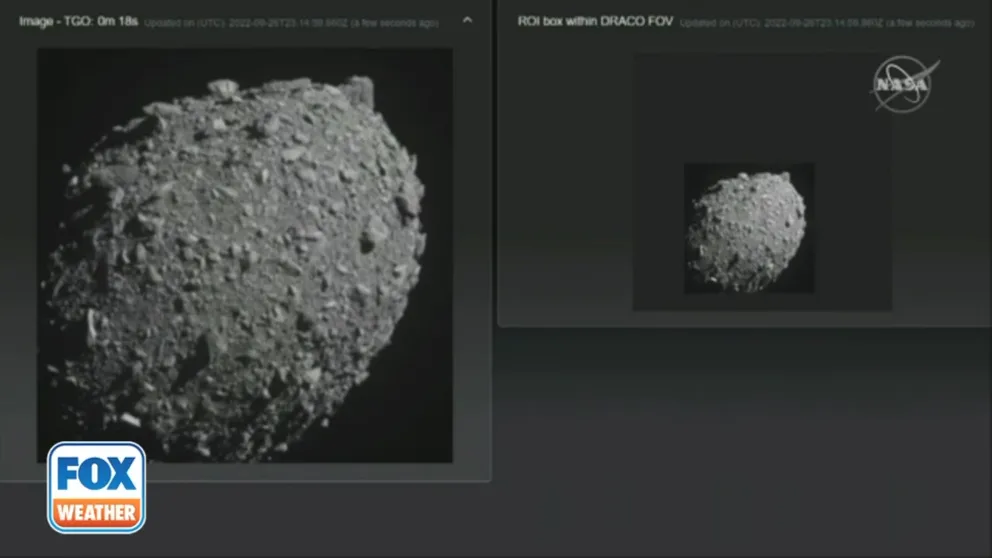Deep-space debris: NASA’s intentional DART crash into an asteroid creates 6,000-mile trail of rubble
Asteroid Dimorphos has a comet-like tail now thanks to NASA's first planetary defense test mission. More observations from telescopes will help DART's team confirm the mission was a smashing success.
NASA DART spacecraft sees asteroid Dimorphos before impact
The National Aeronautics and Space Administration spacecraft sees asteroid Dimorphos before impact
NASA's first planetary defense test mission created a comet-like trail from the asteroid Dimorphos stretching thousands of miles into space, according to astronomers.
Last week, NASA intentionally crashed a refrigerator-size spacecraft into a tiny asteroid moonlet named Dimorphos orbiting another larger asteroid, Didymos, to test one possible planetary defense method. The goal was to change the speed of the moonlet, Dimorphos, by just a tiny percentage, maybe an inch or two a second.
Scientists with NASA said the test mission went smashingly because DART (Double Asteroid Redirect Test) hit its target head-on, ending the spacecraft's life. Still, the work continues as astronomers will monitor the binary asteroid system for tiny changes to Dimorphos' orbit around Didymos.

Astronomers using the NSF’s NOIRLab’s SOAR telescope in Chile captured the vast plume of dust and debris blasted from the surface of the asteroid Dimorphos by NASA’s DART spacecraft when it impacted on 26 September 2022. (Image Credit: CTIO/NOIRLab/SOAR/NSF/AURA/T. Kareta (Lowell Observatory), M. Knight (US Naval Academy)
Around the world, scientists are using dozens of ground-based telescopes to watch the asteroid system's orbit after the impact, including a National Science Foundation telescope facility in Chile.
Two days after DART's impact, astronomers used the Southern Astrophysical Research (SOAR) Telescope, at NSF’s NOIRLab's Cerro Tololo Inter-American Observatory in Chile to create the image above of a massive dust and debris trail coming from Dimorphos.
According to NOIRLab, the ejecta, or debris from the moonlet asteroid, has created a comet-like tail on Dimorphos that is more than 6,000 miles long.
Astronomers Teddy Kareta, of Lowell Observatory, and Matthew Knight, of the US Naval Academy, were clearly able to show the dust trail stretching from the center where the impact happened away from the asteroid.

Asteroid Dimorphos as seen by NASA's DART spacecraft seconds before impact. (Image: NASA/JHUAPL)
"It is amazing how clearly we were able to capture the structure and extent of the aftermath in the days following the impact," Kareta said in a statement.
As part of the Astronomical Event Observatory Network or AEON, Knight said they plan to use SOAR to keep watching the wreckage stretching away from the asteroid.
"The combination of SOAR and AEON is just what we need for efficient follow-up of evolving events like this one," Knight said.
Over the next few months, mission scientists should also get confirmation of the exact orbital change made by DART's hit.
A follow-up European Space Agency mission launching in 2024, called HERA, will visit Didymos and Dimorphos to check the work of DART and see the impact area up close.
